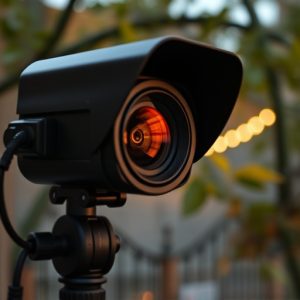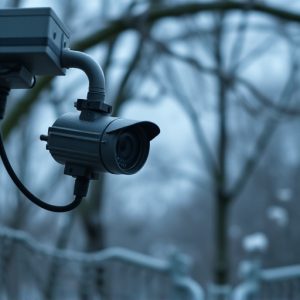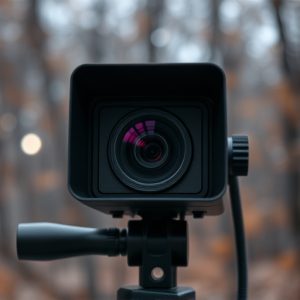Wireless Decoys: Revolutionizing Business Security & Preventing Covert Recordings
Wireless decoy cameras, disguised as everyday objects, offer businesses a discreet way to monitor ac…….
Wireless decoy cameras, disguised as everyday objects, offer businesses a discreet way to monitor activities while enhancing security against intrusion and covert recording. However, deploying these devices requires careful consideration of legal implications, including privacy laws and consent requirements, which vary by jurisdiction. To avoid fines and lawsuits, business owners must obtain explicit consent from employees or customers, establish clear data handling policies, and integrate advanced detection methods, regular security audits, and staff training on privacy regulations to protect confidentiality.
In today’s digital age, businesses face unprecedented challenges in protecting sensitive information from covert recording devices. This article delves into the intricate world of hidden surveillance equipment and its legal ramifications. We explore cutting-edge solutions like wireless decoy cameras, which offer a revolutionary approach to enhancing security. Additionally, we provide strategic insights on placement techniques for comprehensive surveillance while detailing advanced detection methods to thwart unwanted recordings. For businesses seeking to fortify their defenses, this guide offers invaluable knowledge.
- Understanding Covert Recording Equipment and Its Legal Implications
- Wireless Decoy Cameras: A Revolutionary Approach to Business Security
- Placement Strategies for Effective Surveillance
- Detection Methods to Prevent Unwanted Recordings
Understanding Covert Recording Equipment and Its Legal Implications
Covert recording equipment, often referred to as hidden cameras or surveillance devices, are designed to capture audio and visual data discreetly. These wireless decoy cameras for businesses, disguised as everyday objects like lightbulbs or smoke detectors, are placed in strategic locations to monitor activities without raising suspicion. Understanding the legal implications of deploying such equipment is paramount for business owners. Different jurisdictions have strict regulations regarding privacy rights, consent, and the use of surveillance technology.
Using covert recording devices without proper authorization can lead to severe legal consequences, including fines and civil lawsuits. It’s crucial for businesses to familiarize themselves with local laws and obtain explicit consent from employees or customers before implementing any form of hidden camera surveillance. Additionally, clear policies on data storage and handling must be in place to ensure the confidentiality and security of recorded information.
Wireless Decoy Cameras: A Revolutionary Approach to Business Security
Wireless decoy cameras are transforming business security by offering a revolutionary approach to surveillance. These innovative devices mimic real cameras, luring potential intruders while providing a powerful deterrent against covert recording. By strategically placing wireless decoys in high-risk areas, businesses can enhance their overall security posture and protect sensitive information.
Unlike traditional cameras that may be easily detected, wireless decoy cameras operate discreetly, often blending into the environment. This subtlety is a game-changer for business owners seeking to safeguard their operations from internal and external threats. With real-time alerts and remote monitoring capabilities, these cameras enable businesses to swiftly respond to any security incidents, ensuring peace of mind and the protection of valuable assets.
Placement Strategies for Effective Surveillance
Surveillance cameras have evolved beyond their traditional, fixed positions. Today, businesses employ strategic placement techniques using wireless decoy cameras to enhance security. These innovative devices offer a discreet and adaptable approach to monitoring. By integrating them into existing environments, businesses can create a false sense of security, deterring potential intruders while gathering valuable footage.
Placement strategies focus on areas that require close observation, such as entry points, offices, or high-value asset locations. Wireless decoy cameras can be easily mounted on ceilings, walls, or even disguised as everyday objects, making them virtually indistinguishable from regular decor. This tactical approach ensures effective surveillance without compromising aesthetics or disrupting business operations.
Detection Methods to Prevent Unwanted Recordings
To prevent unwanted recordings, businesses can employ advanced detection methods that go beyond traditional security measures. One innovative approach is the use of wireless decoy cameras strategically placed to deter covert recording attempts. These decoy devices mimic real surveillance equipment, tricking potential intruders into believing they are under constant observation. By integrating high-quality wireless decoy cameras into their security systems, businesses can significantly reduce the risk of covert recordings without sacrificing genuine surveillance capabilities.
Additionally, advanced technology like motion sensors and heat detectors can be utilized to trigger alerts when unusual activity is detected. Regular security audits and staff training on privacy regulations further reinforce a culture of awareness and compliance. These comprehensive strategies ensure that businesses maintain control over their data while deterring individuals from engaging in covert recording practices.
In today’s digital age, ensuring privacy and security is a complex task. However, businesses can now leverage innovative solutions like wireless decoy cameras to deter covert recording equipment placement. By employing strategic placement techniques and advanced detection methods, organizations can protect sensitive information while navigating the legal implications of surveillance. This article has explored these essential aspects, highlighting the importance of proactive measures in securing modern-day enterprises from unwanted recordings.


